You are here
The Evergreen State is home to the Lower 48’s wettest spot, one of North America’s largest peaks, and alpine backcountry wilderness on par with anything you’ll find in the Rocky Mountains. Of course, what would such outdoor wonderlands be without federal national park designation?
There are three national parks in Washington—Olympic, Mount Rainier, and North Cascades—and we’re going to hit them all. With so many alpine lakes of celadon, peaks serrated like the teeth of a saw, and musky, lush temperate rainforests on the shore of the Pacific, there’s no reason to choose between them if you have the time to visit them all, especially in the late summer when the season turns to fall.
The First Three Days
Encompassing nearly 1,000,000 acres, Olympic National Park is a massive park, and it encompasses sections of the Olympic Mountains and the northern Pacific coastline. Both are must-see destinations in the park for entirely different reasons.
Begin your brief tour in Olympic with a stay at Mora Campground for one reason: it’s the closest campground to Olympic’s stunning Pacific coastline. Visit sea stacks and vibrant tide pools at Second Beach, Rialto Beach, Hole-in-the-Wall, and Kalaloch Beach 4 before continuing east on Highway 101 into the heart of the park proper.
Given its size, many of the backcountry excursions into Olympic are going to be inaccessible to anyone without a pack. This is an unfortunate reality, especially since some of Olympic’s most stunning scenery is a day into the wilderness—places like Enchanted Valley, the High Divide, and Seven Lakes Basin. No need to worry. Access to the north side of Olympic is well developed, and there are several campgrounds and adventures to choose from along Highway 101. Klahowya, Lake Crescent, Elwha, and Altair are all excellent campground options, Heart O’ the Hills offers spacious and private campsites close to many of Olympic’s most popular destinations. Easily spend several days here summiting Mount Angeles, awing over the views from Hurricane Ridge, the wildlife and wildflowers on Hurricane Hill, or hiking to Sunrise Point via the Klahhane Ridge Trail.
Onward to Rainier
The highest peak in Washington, one of the highest in the Lower 48, and a massive volcano with an unmistakable profile that adds a looming presence to the Seattle skyline, Mount Rainier and its cubic mile of volume offer alpine adventures wholly unfound in the relatively diminutive mountain ranges of the Olympic Peninsula. Follow Highway 101 south along the coast of the Hood Canal—where you can stop for world-class oysters pretty much anywhere, although Hama Hama is one of the best. Catch I-5 south to Highway 12, which carries you east and into Mount Rainier National Park.
Cougar Rock Campground is a popular destination for park visitors, and it’s ideally located close to Paradise. That said, most of us don’t want to combat the hordes of park visitors that may be trying to eke out that last little bit of summer sun. Head on to Ohanapecosh in the park’s far southeastern corner. Although somewhat removed from prime Rainier adventures, the campground is the biggest in the park, and its location keeps it relatively quiet—although still busy.
From there, Rainier is your unyielding and immobile oyster to shuck. Explore Comet Falls, Rainier’s tallest accessible waterfall. The Skyline Trail and Nisqually Vista Trail showcase the volcano’s formidable size. Beginning trad climbers, go to Unicorn Peak, where the views of Rainier and the Goat Rocks Wilderness are unparalleled.
Be sure to visit the park’s eastern flank, as well. Casting a wide rain shadow, portions of the eastern flank of the volcano are noticeably drier than the west side. Try Sunrise Rim, where Rainier’s glaciers are on display. Mount Fremont is adorned with a fire lookout at its summit and great views of a drier alpine environment, as is the Burroughs Mountain hike. Tamanos Mountain is yet another hike with outstanding views of the volcano.
A Wilder Frontier
Olympic and Mount Rainier national parks are two of the more popular parks in the park system, and both are in the top 20. By comparison, North Cascades National Park gets but a wee crumble of the visitation that the giants down south get. Good. Begone, ye pests.
We could talk about how ridiculous it is that this park received barely 10,000 more visitors than a trail-less, road-less, Grizzly-infested national park north of the Arctic Circle—a place where a rifle is mandatory and the only way in has a pair of wings. On the other hand, we could take the moment to enjoy the rare solitude of a beautiful national park within striking distance of (count ‘em) two major media markets in North America.
There are more accessible adventures in the North Cascades, but don’t bother with them. Go to the Cascade River basin. East of Marblemount, Washington, the watershed has three of the most spectacular, if demanding, adventures in the North Cascades. Take advantage of the wild backcountry of the North Cascades, and try your hand at camping beyond the car.
Climb more than 4,000 feet over 13 miles to Cyclone Lake and spend the night at its backcountry campsites sipping from a glass of whiskey under the stars alongside the North Cascades’ highest alpine lake. Across the Cascade River valley, climb to the Hidden Lake Lookout for another night at the first-come, first-served camping shelter near Hidden Lake Peak. Sporting snow well into July, you have the option to get in a few turns on spring and summer corn. Still, the shelter is open year round, meaning you don’t need to strap skis on your back to stay there. And dear lord, the views. Few other places in the North Cascades have this kind of spectacle, but Forbidden Peak in the nearby Boston Basin is one of them. Forbidden Peak is one of North America’s 50 classic climbs with solid rock an Alpine Grade II (5.4 to 5.6 Yosemite Decimal) and arguably the best views from any composting toilet on the continent.
You’ll return to I-5 with a renewed sense of courage and the satisfaction of doing what few others have done.


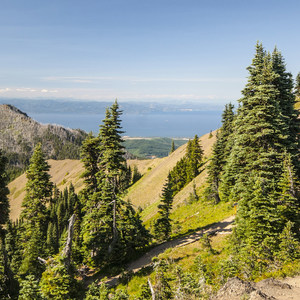
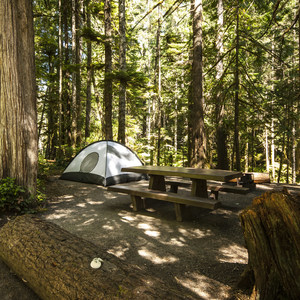
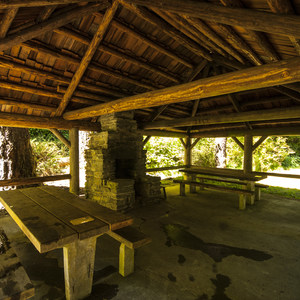
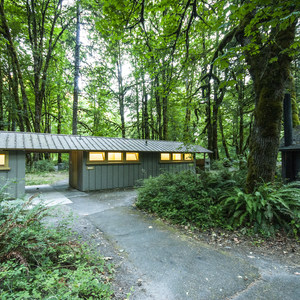
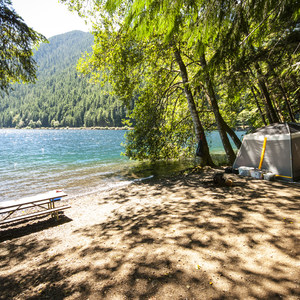
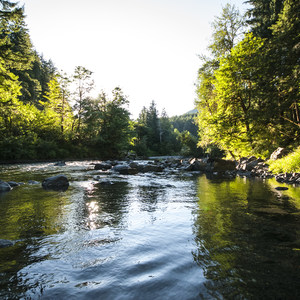
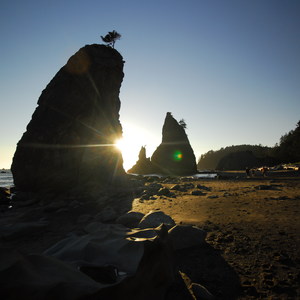
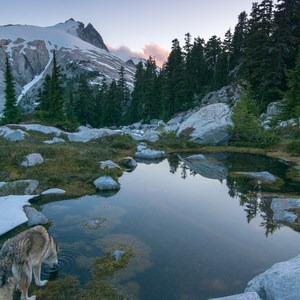



Comments
Sign In and share them.